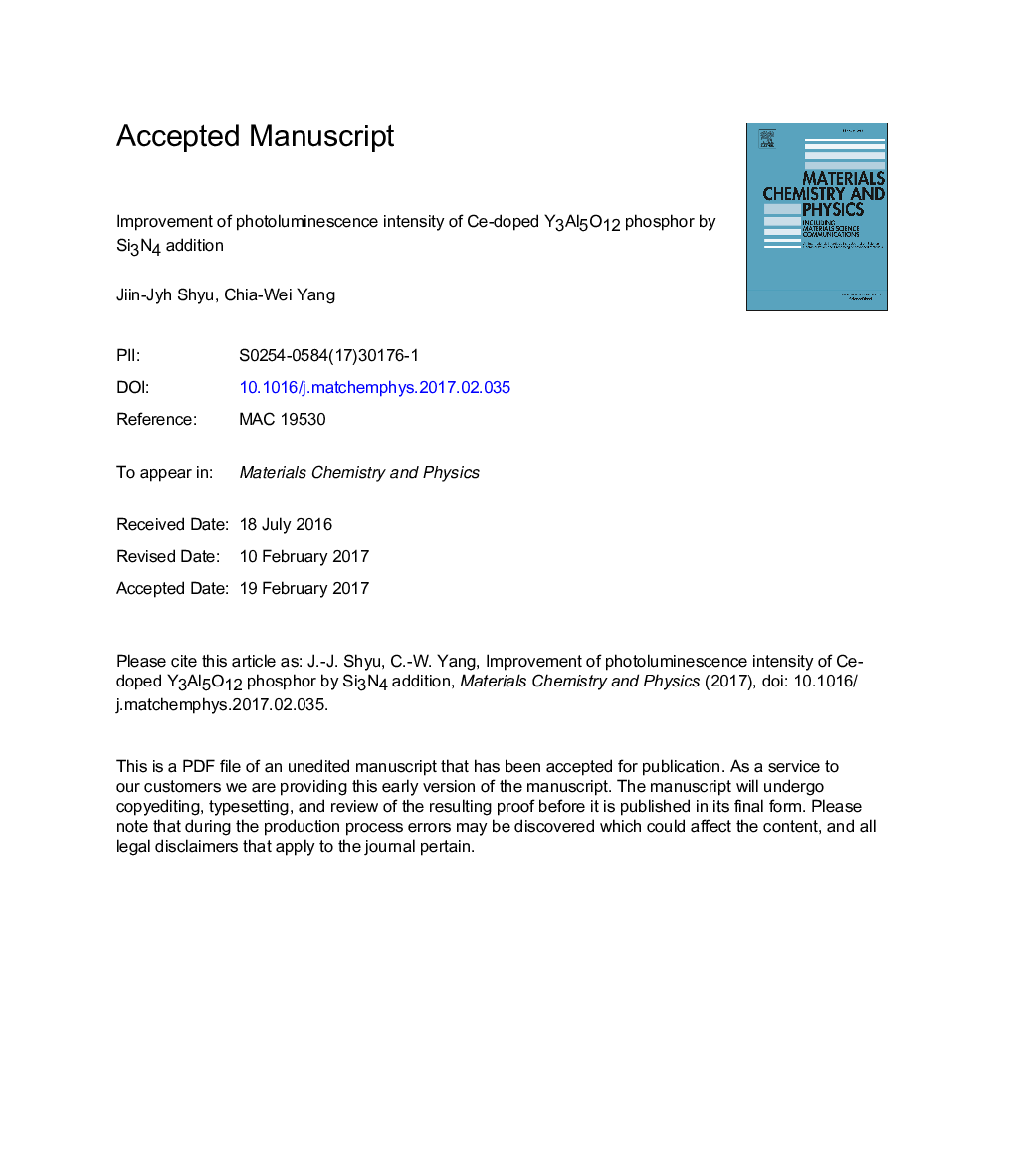| Article ID | Journal | Published Year | Pages | File Type |
|---|---|---|---|---|
| 5448093 | Materials Chemistry and Physics | 2017 | 24 Pages |
Abstract
Yttrium aluminum garnet (Y3Al5O12, YAG) has been widely used as a host for luminescent ions. The present paper describes the effects of Si3N4 addition on the formation and photoluminescence properties of the Ce-doped YAG yellow phosphors. Phosphor powders with the nominal compositions of Y2.95Ce0.05Al5-mSimO12-mNm (m = 0-0.6) were prepared by calcining the mixed raw materials at 1500 °C in nitrogen atmosphere. X-ray diffraction, x-ray photoelectron spectroscopy, scanning electron microscope, and transmission electron microscopy equipped with an energy dispersive x-ray spectrometer were used to characterize the structure of the calcined powders. The photoluminescence properties were measured with fluorescence spectrophotometry. It was found that in the range of m = 0-0.27, single phase YAG solid solution (s.s.) in which the Y, Al, and O sites are partially occupied by Ce, Si, and N ions, respectively. The nitrogen ions do not distribute homogeneously over the YAG lattice. The tendency to bond with nitrogen ion for the cations is (Y, Ce) > Si > Al. With the increase in the Si3N4 content, the increase in both the Ce3+/(Ce3+ + Ce4+) ratio and the CeN bonds improve the intensity of the photoluminescent emission. At m = 0.27, the emission intensity reaches a maximum which is about 2.5 and 1.6 times of that for the Si3N4-free composition (m = 0) calcined in air and nitrogen, respectively. When the Si3N4 content (m) is higher than 0.27, the emission intensity decreases due to the existence of residual Si3N4 phase.
Related Topics
Physical Sciences and Engineering
Materials Science
Electronic, Optical and Magnetic Materials
Authors
Jiin-Jyh Shyu, Chia-Wei Yang,
